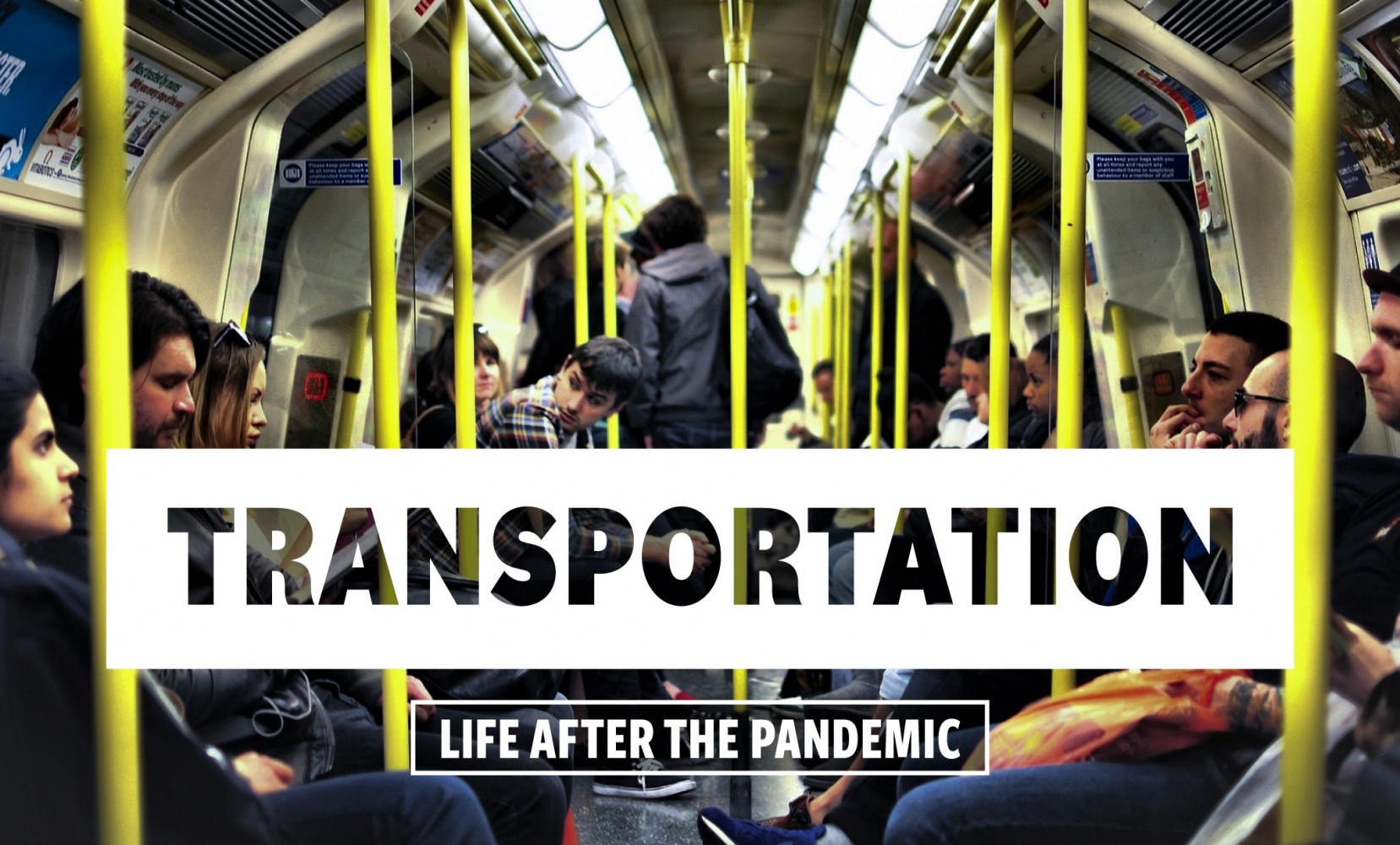
COVID-19 might speed up not slow down transit use
For Thomas Lanier Williams III, better known by his pen name, Tennessee Williams, streetcars were the perfect metaphor. The tragic playwright saw the inevitable and unalterable nature of their route, predetermined by the tracks they follow, to be a summary of the human condition.
“They told me to take a streetcar named Desire, and then transfer to one called Cemeteries and ride six blocks and get off at – Elysian Fields!” Blanche DuBois, the unfortunate heroine of his signature work, A Streetcar Named Desire, announces when she arrives to stay with her sister.
Through the play, Blanche is driven by desire on an inevitable journey to destruction. Her path to ruin is represented in her travel itinerary: a stint on desire, before transferring to cemeteries.
Many commentators in Canada fear that the COVID-19 pandemic means transit is going in the same, ruinous direction.
Sceptics believe a fear of enclosed spaces filled with strangers will decimate demand and lead to an inevitable decline – at least in the short term – for public transit systems around the country. The drop off in demand would come just as many transit dreams have begun to enjoy the investment users have been crying out for since automobiles became less popular in the ‘90s, when major urban renewal emerged alongside environmental concerns.
In reality, the future is much brighter.
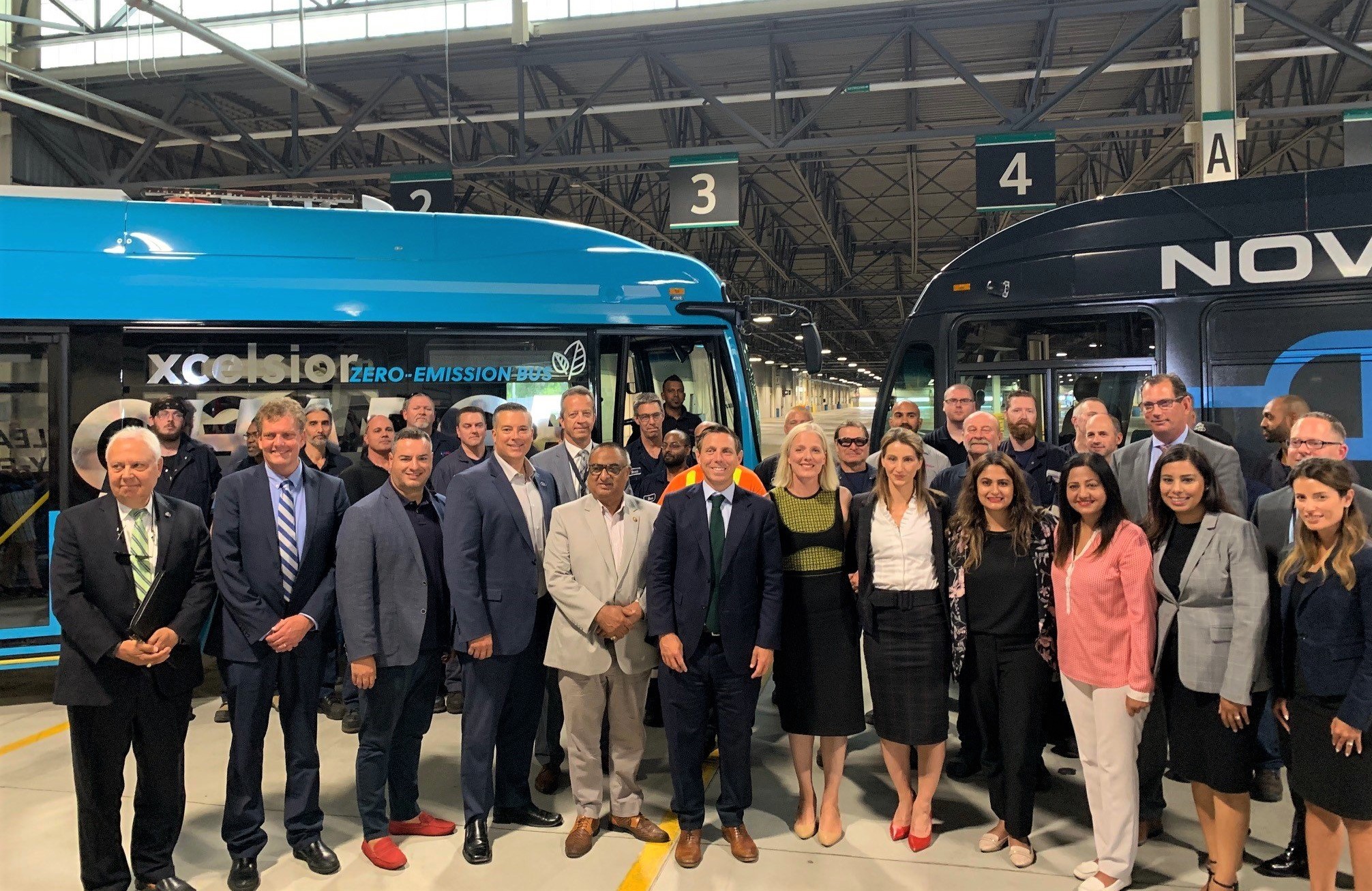
Canadian Minister of Infrastructure and Communities, Catherine McKenna, centre, in Brampton with Mayor Patrick Brown and other local politicians last year to announce funding for a new electric bus pilot program
Peeling back the layers of hype and hysteria reveals a wealth of new chances created by a pandemic that has driven manufacturing and creativity to new heights.
As COVID-19 measures begin to gently ease, councils around Canada can invest in a new route: a streetcar named opportunity.
“The future for transit is great. Contrary to popular belief there is going to be more transit, bigger transit, more rapid transit,” Dr. Josipa Petrunic, President and CEO of Canadian Urban Transit Research & Innovation Consortium (CUTRIC), told The Pointer. Petrunic is currently wrapping up her second annual conference on smart, sustainable transit, attended (digitally, of course) by politicians, scientists, engineers and industry leaders. The conference is pioneering discussion on the future of smart mobility.
The mood among industry leaders, Petrunic says, is one of pioneering innovation, not a fear of the future.
“Temporarily, right now, we’re looking at people avoiding transit or transit having reduced service because we all reacted to an immediate crisis,” she says. “But over the long term, even by the end of this year, we’re going to see a return of riders to transit, but, along with that, a demand for better transit… It might take 24 to 48 months to get there, but there’s no doubt that’s where we’re going… there is also no divergence from the carbon neutral economy.”
The pandemic, so often compared to the damage caused by the Second World War, offers the same opportunity to innovate. The fact COVID-19 does not yet have a vaccine and spreads readily indoors through close contact sets a challenge for the transit industry.
The traditional approach of transit planning has attempted to squeeze as many people into a vehicle as possible. The rule has simply been the more people you move using the fewest vehicles, the better.
But transit can be more than that.
Instead of just being about the bottom line, maximum efficiency and carbon savings based on fuel per-capita calculations, it can improve in a post-pandemic world by striving to do the basics better. Residents in Mississauga have long complained about the grime and dirt on irregularly cleaned MiWay buses, while anyone using Brampton Transit is familiar with the service’s issues of overcrowding.
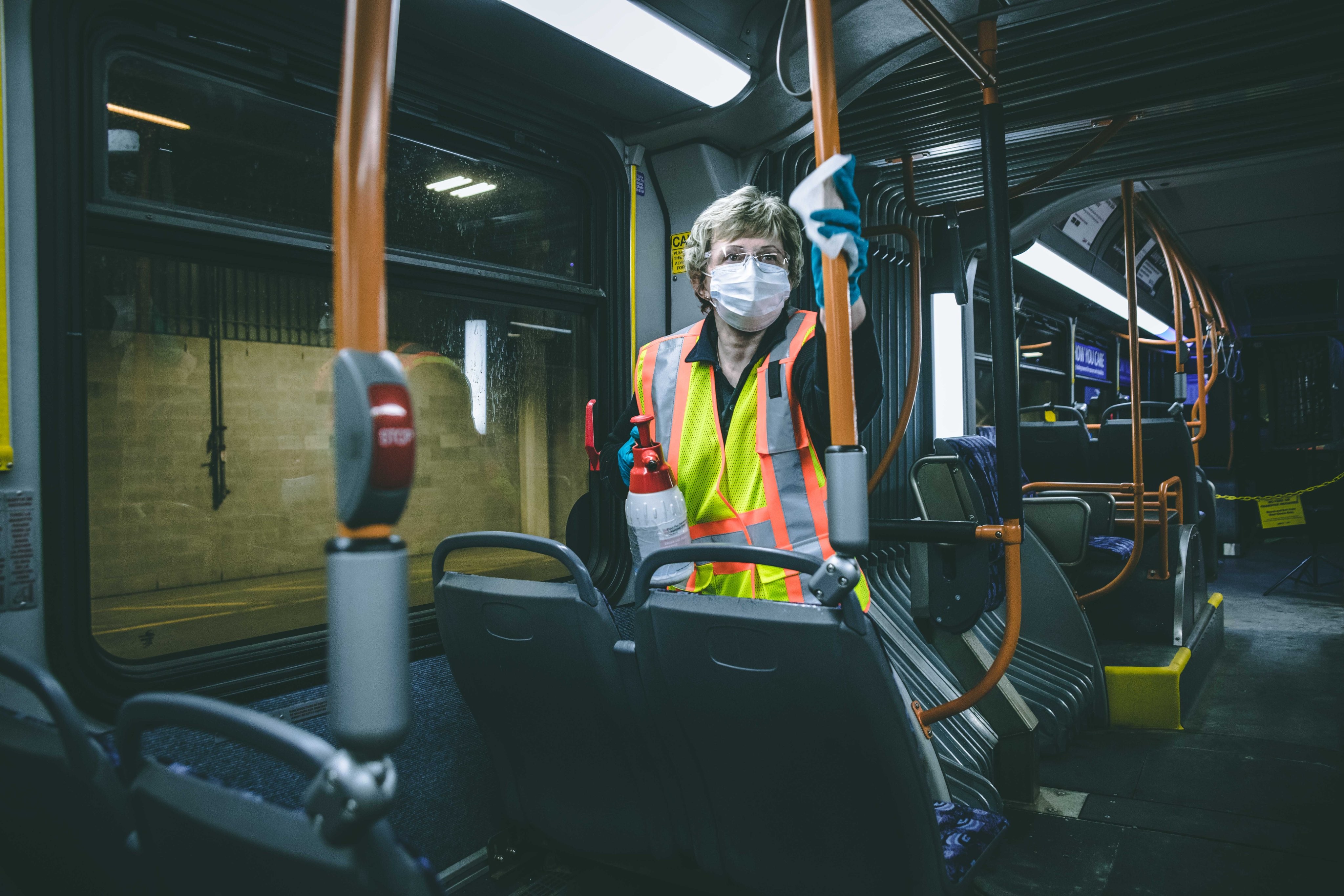
Buses are being cleaned more regularly and with higher sanitization requirements
Before COVID-19, these were unfortunate things that passengers had to deal with; almost a punishment for choosing not to drive. In a world where the novel coronavirus abounds, the same problems pose a dangerous threat to public health.
Buses will almost certainly be improved to be pandemic proof, while also actively enhancing the experience of those travelling on them. Instead of using hot air and circulating it around the vehicle to keep passengers warm, something that could spread the virus, ambient seat warming technology could be used to heat individual passengers. Instead of cramming onto buses until they’re completely chockablock, additional on-demand shuttles and self-driving last-mile solutions could come into play. Buses could be built to allow space for passengers to sit comfortably, transitioning to electric to negate the issues of increased fuel usage.
Essentially, almost every problem that can be listed with public transit as a result of COVID-19 was already a gripe for passengers before, and chronically reminded them of being treated as second-class citizens compared to their luxuriously swaddled, climate-controlled car-loving compatriots.
It’s inevitable that many of the trappings of luxury travel will eventually be embedded in transit vehicles. WiFi is already becoming more common, comfort features are being rapidly innovated, better spacing was already being explored pre-COVID, while Mercedez is in late-stage testing of a luxury bus that includes semi-autonomous predictive driving with high energy efficiency and a raft of safety features.
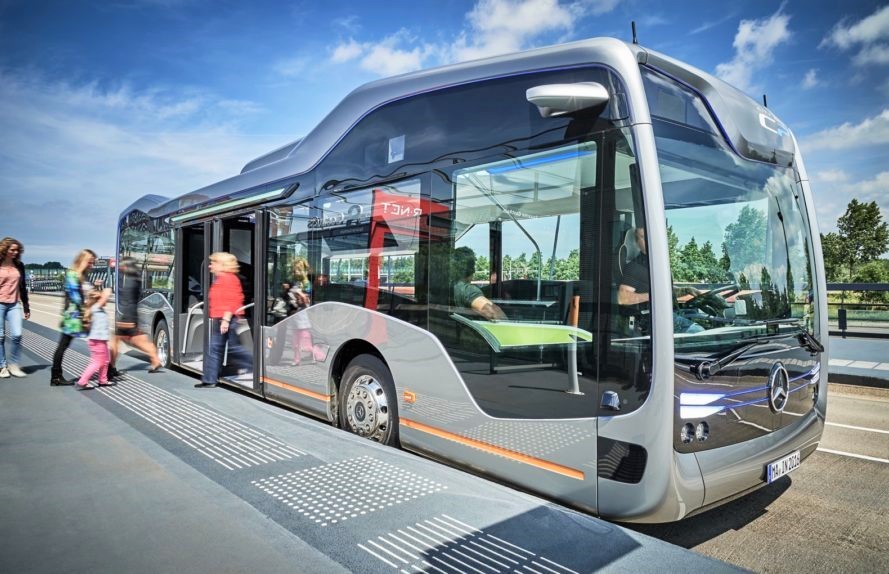
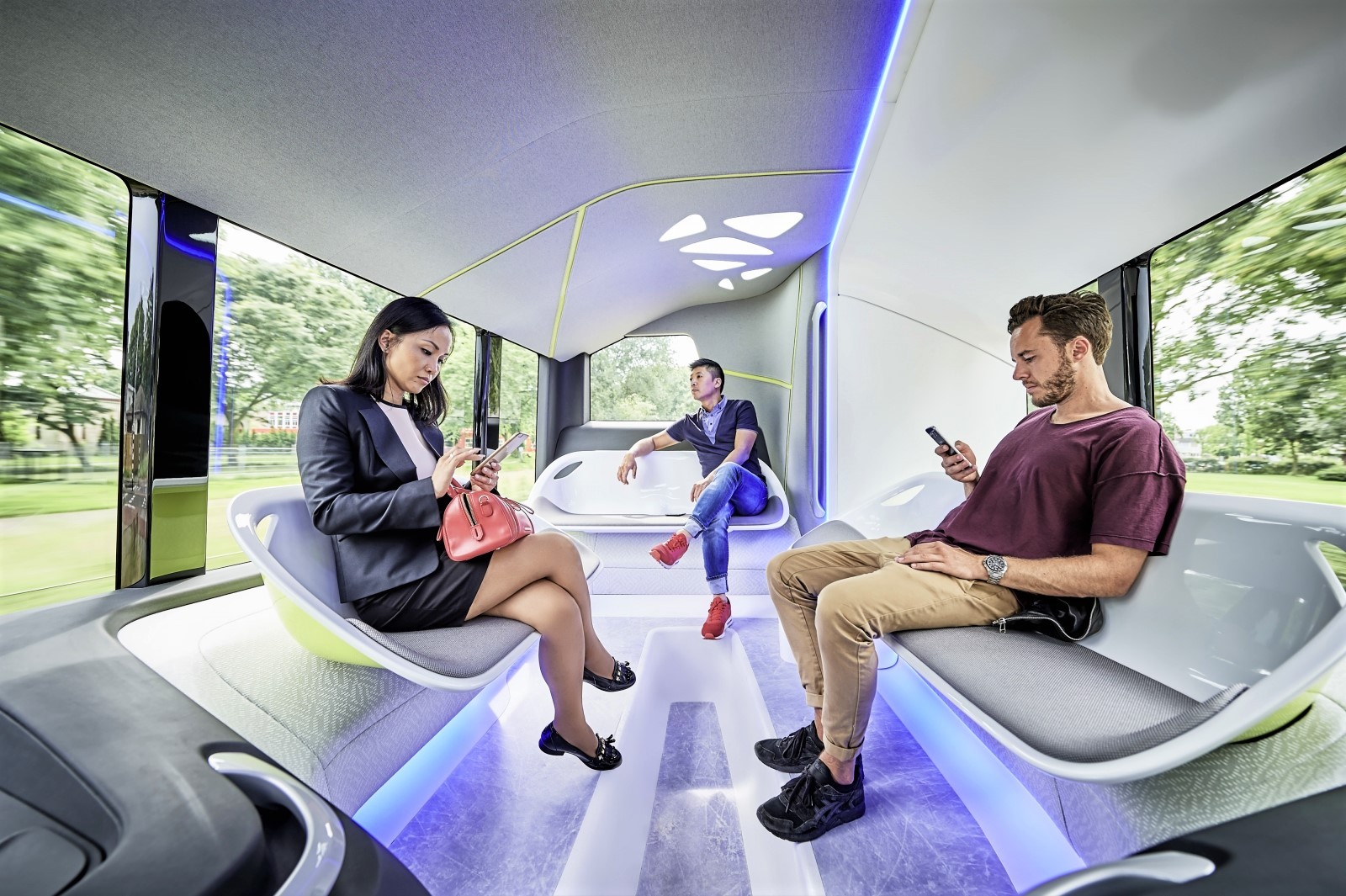
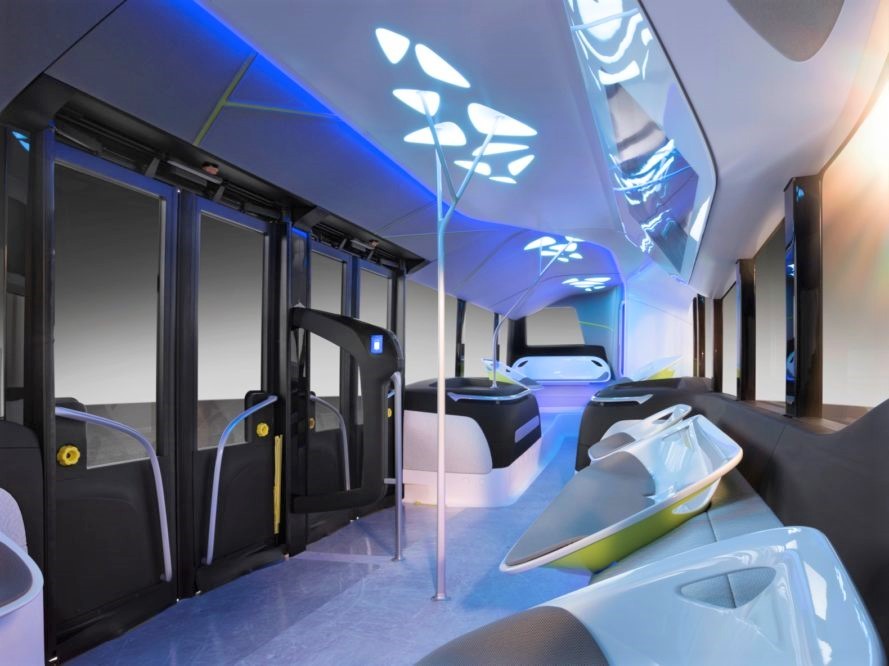
It's a brilliant play by the high-end German vehicle maker. Its luxury car market will still have legs for weekend driving enthusiasts and others who will never forsake their passion, but if more people in the middle-to-lower end car market can be convinced to switch over to transit by a more pampered experience, the opportunity to supply transit systems across the globe could be huge.
Other, younger consumers who are more environmentally conscious will be drawn to the reality of electric and other high efficiency buses and train systems that are already replacing older transit infrastructure. Brampton partnered with Ottawa last year in a groundbreaking project to test electric buses and charging systems in the city, with $11.15 million from the feds.
New designs for LRT vehicles should also leave future riders of Mississauga’s Hurontario line primed with anticipation of what their commuting experience might look and feel like. The suburban car might be in trouble.
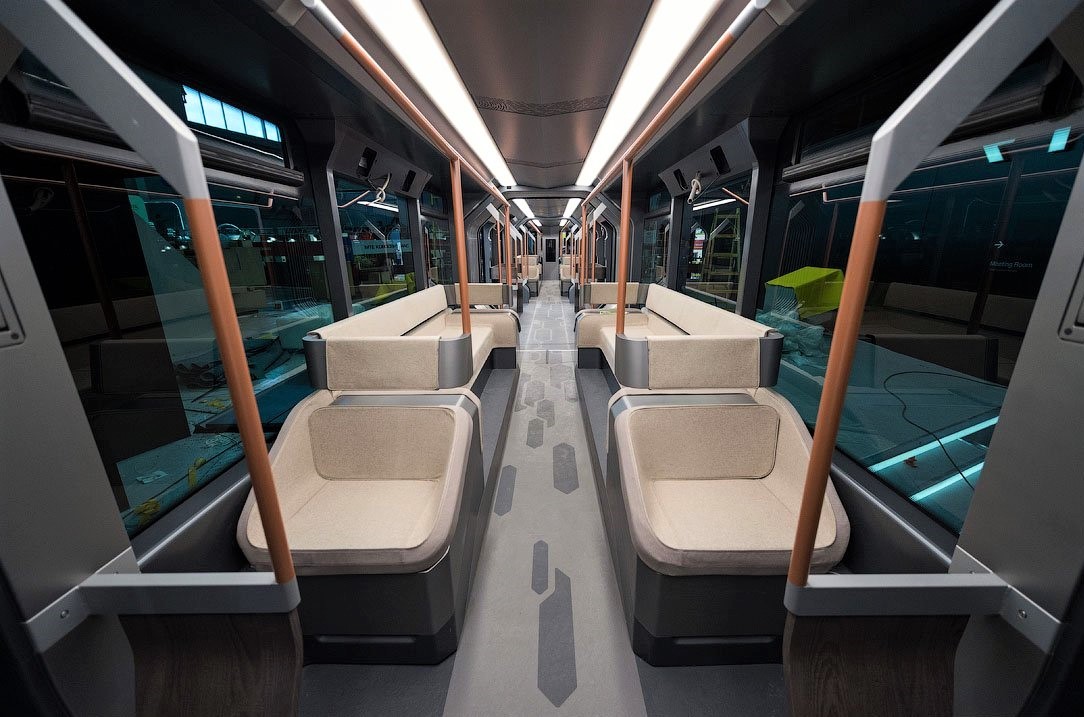
A modern Russian commuter train car design
The rapid economic and manufacturing response to COVID-19 proves that changes to level the transportation playing field could take a few short years and not decades.
“From a manufacturer standpoint, it normally takes them a couple of years to design a new vehicle, but where we are right now, you’re hearing about manufacturers talking about new innovations within the next six months,” Petrunic explained. “If there’s any kind of indication from the automotive parts industry, companies like Linamar turned over and started making ventilators in a matter of weeks, even though they’d never made such things before. The pandemic created a new capacity for innovative thinking that took people to a level they’ve never been at before in terms of moving quickly and accepting risk and accepting it might not work out perfectly the first time, but we have to do it.”
The argument for making those changes now, and deciding not to take the collective foot off the gas, is simple.
Although many suburban council chambers treat transit as one of the leisure activities they provide – and, when the going is good, a boutique service to be proud of – it is a vital need for many. The fact that, even at the height of the pandemic when fear of COVID-19 was rife, and the overwhelming majority of users were not working or allowed to continue typical social interactions, MiWay kept 25 percent of its pre-COVID ridership shows just how important it is for a significant number of people. In Brampton, as service has adapted to deal with the pandemic, overcrowding on buses has intensified and many workers who cannot afford car ownership return to transit.
“What’s important to keep in mind is that, even through the pandemic, transit has been a lifeline service,” Professor Matti Siemiatycki, Interim Director of the School of Cities at the University of Toronto, told The Pointer. “For frontline workers, for people who are going to medical appointments and to do grocery shopping and whatnot, who don’t have access to a car, it is really important.”
The idea that everyone can afford to avoid transit in a post-pandemic world is a fallacy perpetuated by those with the privilege to choose. Buses, trains and streetcars serve two purposes: at a macro level, they are the key to a more sustainable and environmental future; more crucially for many, they are freedom to live and move around.
In dense urban cores like downtown Toronto, cycling and walking have shot up as residents have abandoned transit. People are no longer trekking across town to see friends, or escaping for impulsive weekend retreats; instead they shop at their local stores and take advantage of their nearby parks in the glorious sunshine.
But in Mississauga and Brampton, the layout is not designed like that. Kilometres of housing is peppered with strip malls and Walmart superstores. Even the densifying parts of Mississauga are nothing like Toronto’s downtown. For those who do not own a car, it’s not possible to start walking or cycling for their weekly grocery shopping or a jaunt to the nearest urban distraction. Transit is key.
Sprawling planning, high speed roads, drag racing and recent traffic accidents, such as the Brampton tragedy that took four lives on Thursday, are just a few reasons cycling is not a viable option. Even without the danger and the reality of urban infrastructure designed for the car, distances are generally too far to walk.
While some may abandon transit in the immediate aftermath of COVID-19, those who rely on the service deserve to see every investment and effort made to improve its convenience, enjoyment and safety.
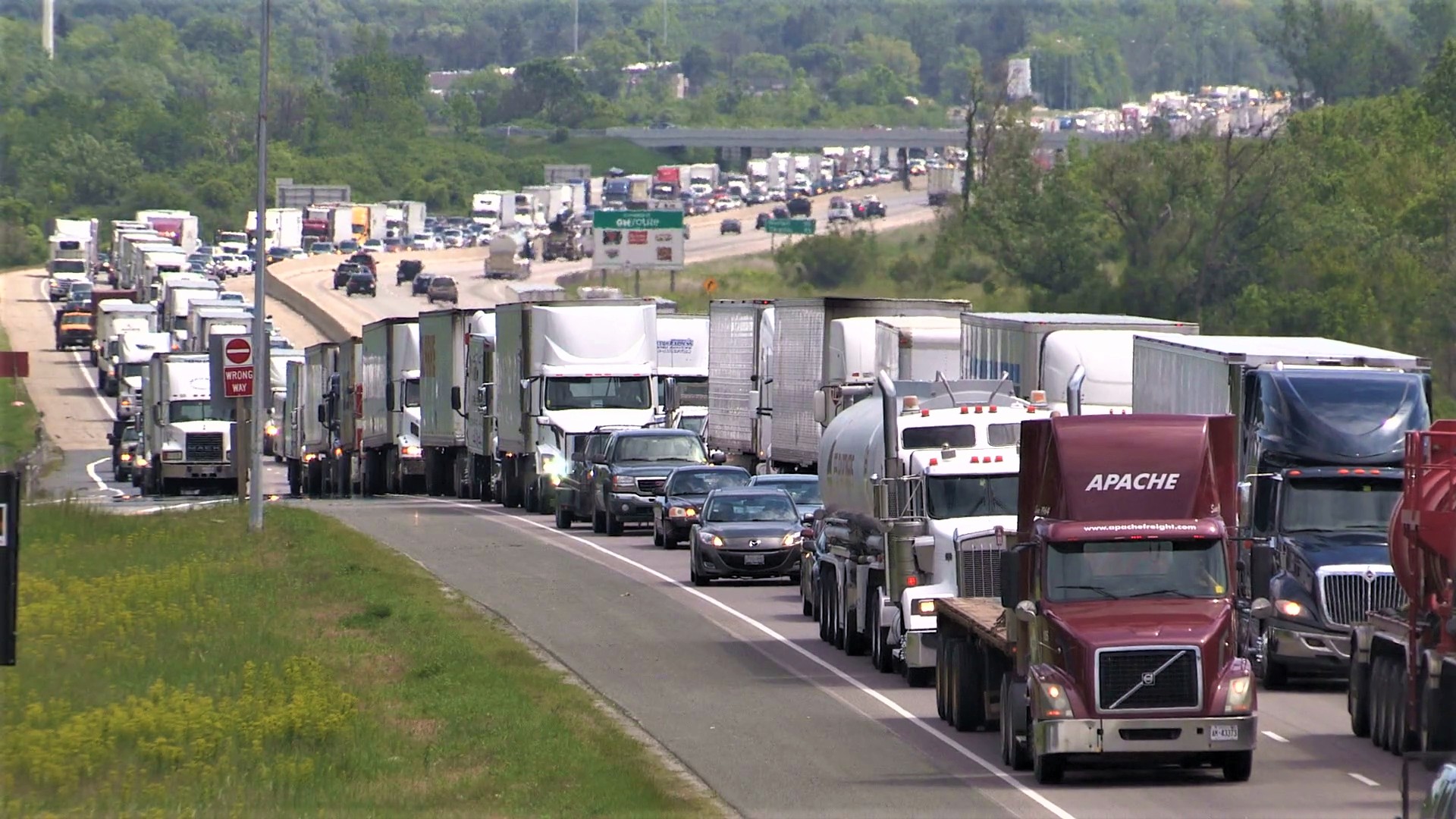
Who really wants to fight this everyday in their car?
“The most significant place where transit [was needed at the height of the pandemic] was in the suburbs,” Siemiatycki added. “Especially in the inner suburbs, which are [often] lower income and have more racialized populations with new immigrants, there’s a lot of transit dependence. And it is in those areas that transit vehicles have been the busiest.”
The immediate stumbling block for transit services in and around the GTA is that the piggy bank is empty. As a never-ending stare down continues between the federal and provincial governments around how to bail out cities, staff at city hall in Brampton and Mississauga are drawing up preliminary budget documents.
The projections and plans in those documents will be grim.
A short-term solution Mississauga Mayor Bonnie Crombie has referenced is to defund capital projects in the short-term. The plan would be to move such projects funded by taxes (instead of debt or development charges) into the operating budget to keep cities afloat. Those decisions would harm transit expansion, including the purchase of new, stylishly designed, energy efficient modern vehicles to improve the situation for residents.
Regardless, many are confident a bailout and stimulus packages will eventually arrive. Canadian Minister of Infrastructure and Communities, Catherine McKenna, has evoked Franklin D. Roosevelt’s New Deal in interviews, hinting at significant investment in capital projects to create jobs and a recovery when the time is right.
If the money does flow, cities will be given an opportunity to double down on their commitment to transit.
Before COVID-19, leaders up and down the country sang the praises of transit and spoke of the importance of reducing their emissions. Most set targets of low or no carbon footprints by 2040, a deadline approaching at pace. To achieve those deadlines, they won’t be able to shy away from their commitment to transit just yet and will need to hold their nerve.
“This is a huge opportunity right now,” Petrunic says. “Momentarily, and at this time, it is calamitous for families and households, but for transit this is an open door – step through it.”
“The 2020s would have already been defined by a lot of technological innovation because York Region, Brampton, Mississauga, Toronto, they’ve all set goals for zero emissions by 2040. In order to get there, they have to start buying and designing these [low carbon transit] systems.”
There is no doubt that some hesitancy remains around jumping straight back onto a subway or a bus. Until a vaccine is widely used, something that could take years, people will fear COVID-19. Some of that fear has come from warnings by leaders to stay off transit, a message that could change if investment makes it safer.
“There’s actually been some research, anecdotal evidence coming out from Japan and France as they reopen their economy. They’re not finding that transit has been a key vector for the spread of COVID[19],” Siemiatycki explained. “It’s not peer reviewed science yet, so that needs to continue, but the notion that people are not going to return to transit [is false]. I think transit will continue to play a significant role in our cities and it is important that we focus on how to make it safe and ensure it’s safe and effective for those who use it.”
Jonathan English, a PhD candidate at Columbia University specializing in suburban bus transit in the GTA, added that the level of safety people see on transit is key. “I hope that we get a vaccine very quickly, but I think perception is reality when it comes to transit. And if people perceive transit as not safe, they’re not going to ride it regardless of what regulations or procedures are in place,” he says.
Reliability is also key, and if cities can look after these features, while continuing to provide their share of transit funding, while moving away from bad suburban planning of the past, ridership should be inevitable. The federal government, meanwhile, seems desperate to give out huge transit capital grants, under its well-funded $188 billion Invest In Canada Plan for massive infrastructure renewal.
With much of the modern planning across Mississauga now being designed around transit use, and the Hurontario LRT under construction, ridership could skyrocket, representing a guaranteed customer base. Industry leaders are primed to innovate, ready to produce vehicles that improve the overall quality of the transit experience, while keeping riders safe. Meanwhile, a large number of potential or infrequent passengers who may own their own vehicle, could be willing to have their minds changed, they just need an alternative that beats the mind-numbing experience of car commuting across clogged thoroughfares in every way.
The knee jerk reaction to worry about the future of transit is a perfectly natural one, but it’s not a reaction the experts share. In the word of transit, optimism abounds.
To navigate the current crisis, Canadian cities need to take a streetcar named Ambition, transfer to one called Innovation and, by the time riders travel through not past their neighbourhoods, their transit will begin to work for everyone, even in a post-COVID world.
Email: [email protected]
Twitter: @isaaccallan
Tel: 647 561-4879
COVID-19 is impacting all Canadians. At a time when vital public information is needed by everyone, The Pointer has taken down our paywall on all stories relating to the pandemic to ensure every resident of Brampton and Mississauga has access to the facts. For those who are able, we encourage you to consider a subscription. This will help us report on important public interest issues the community needs to know about now more than ever. You can register for a 30-day free trial HERE. Thereafter, The Pointer will charge $10 a month and you can cancel any time right on the website. Thank you.
Submit a correction about this story


